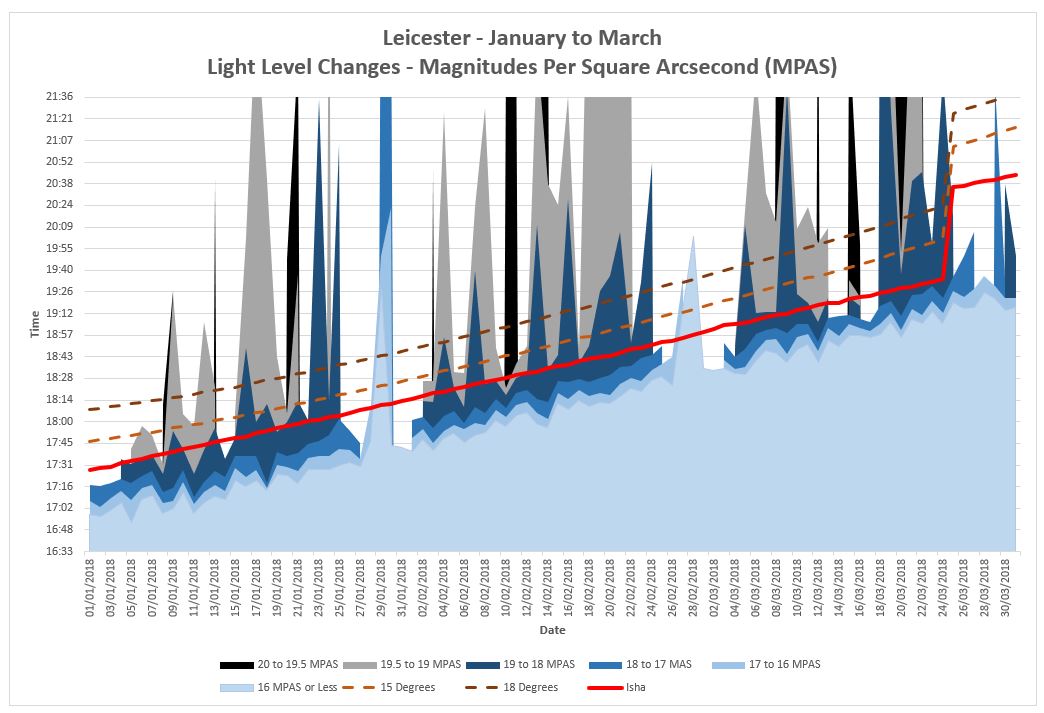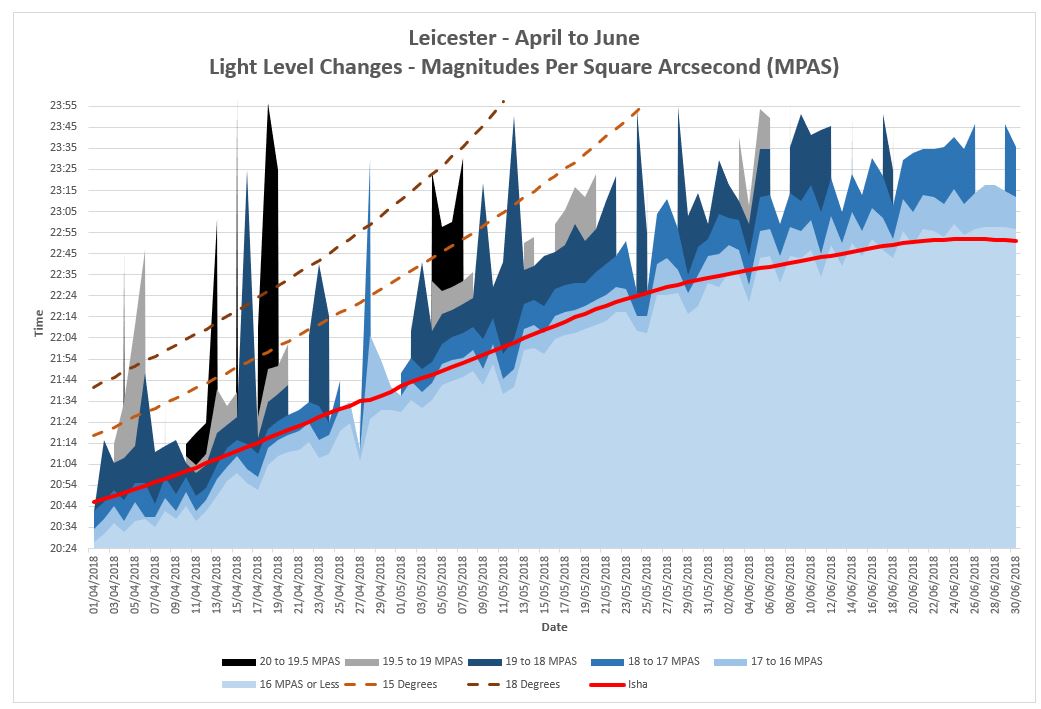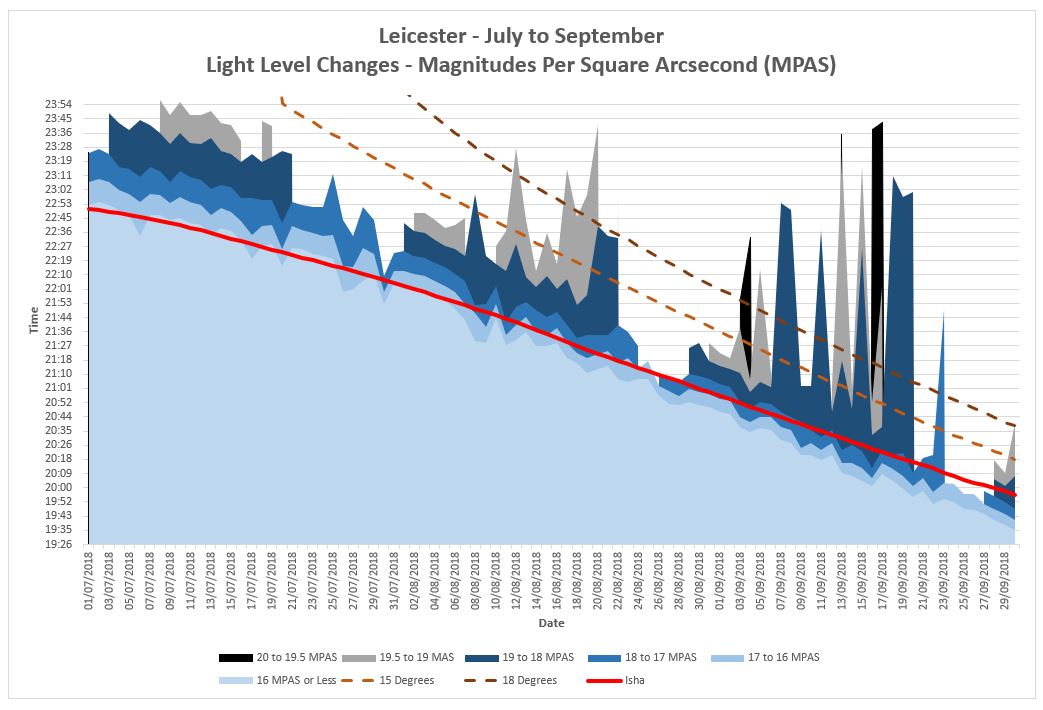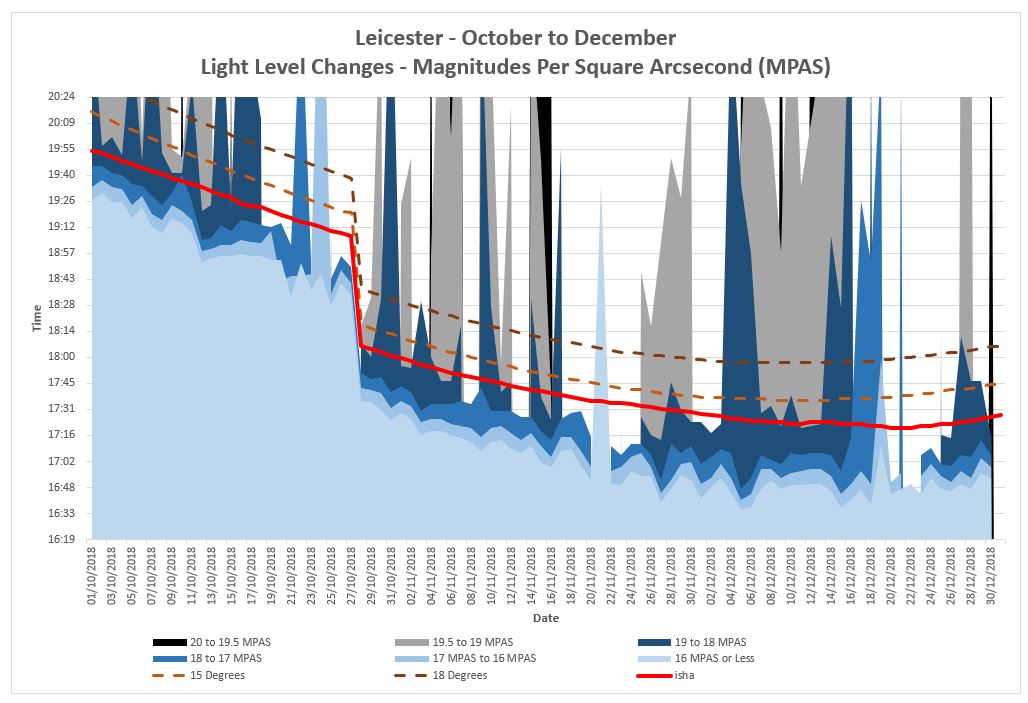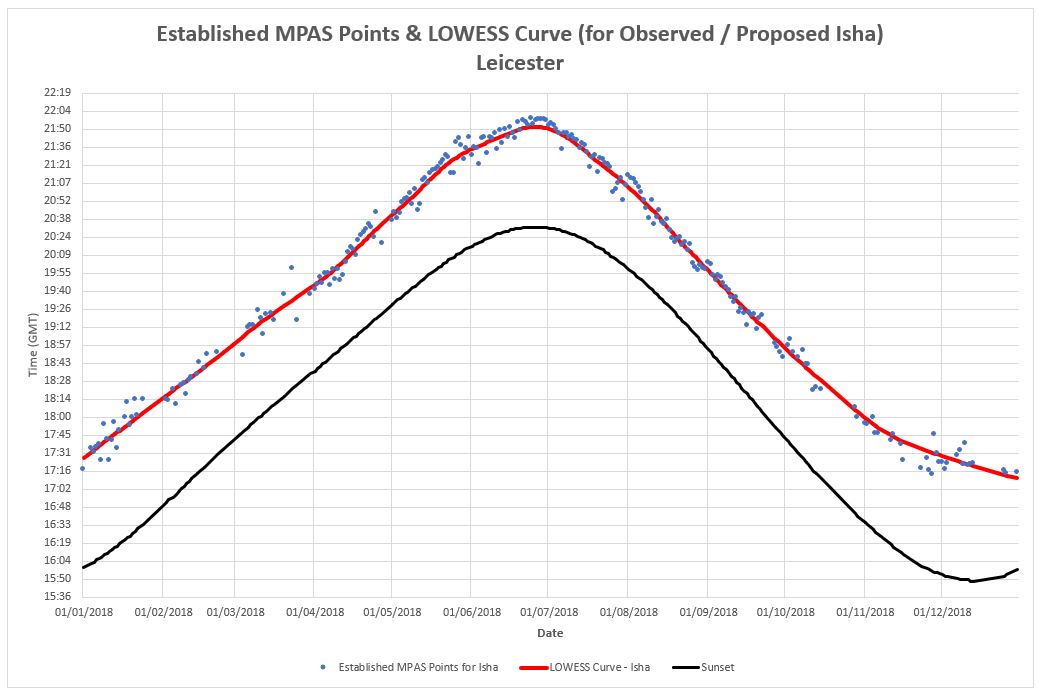Alongside logging the first point at which the light levels change (Tipping point), the continuous data logging of light level readings (magnitudes per square arcsecond - MPAS) from sunset to sunrise the following morning, allowed the study to track the changes twilight during the transit of the sun.
The SQM measures the brightness of the night sky in magnitudes per square arcsecond (MPAS). This is a logarithmic measurement where large changes in sky brightness correspond to relatively small numerical changes. This allows for illumination changes to be measured on a simple scale and attributed as follows:
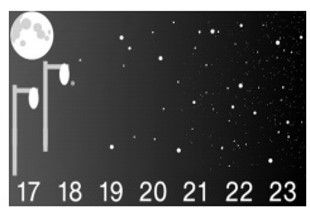
From the data logged, we were able to see the changes in the MPAS reading after sunset for the full year. The following charts only show the following:
- 16 MPAS or less - The sky becoming darker after sunset, red and while light remain
- 16 to 17 MPAS - Red light no longer visible but white light may remain
- 17 to 18 MPAS - Majority of white light is no longer visiable
- 18 to 19 MAS - Dark enough for major stars to be seen in the sky - dark enough for white light not be visible.
- 19 to 19.5 MPAS - All white light has disappeared
- 19.5 MAS to 20 MPAS - Considered to be night where the sky is very dark. The maximum MPAS reading logged by this project was 21.92
The following charts show the changes in the twilight as the sun drops below the horizon as coloured areas. The sun depression angles of 18° and 15° is also shown as dotted lines.
There are periods where the twilight is bright (16 to 19 MPAS), this is the middle days of the lunar month where the moonlight increases the ambient light. These dates can be ignored.
For our purposes of establishing when isha is most likely to be occurring supported by observations and the levelling point information, on these charts the red line is what has been calculated as the time for Isha.
[Click Image to Expand]
During this first quarter (Jan to Mar), for the non-middle lunar month days the sky reaches a darkness level (19 to 18 MPAS) well before 15°.
[Click Image to Expand]
During this second quarter (Apr to Jun), for the non-middle lunar month days the sky darkens to 18 MAS well before 15° with no correlation between the depression angle of the sun and the resulting changes in light levels.
[Click Image to Expand]
During this third quarter (Jul to Sep), for the non-middle lunar month days the sky darkens to 18 MAS well before 15° with no correlation between the depression angle of the sun and the resulting changes in light levels.
[Click Image to Expand]
During this last quarter (Oct to Dec), for the non-middle lunar month days the sky reaches a darkness level of 19 to 18 MPAS well before 15°.
Unlike Subh al-Sadiq (dawn), there is different light conditions which can be used to establish Isha.
In Islamic terms, there are two definition for Isha:
- Shafaq al-Amamr - When the red light after sunset has been replaced with only white light
- Shafaq al-Abyad - When the white light has been replaced with darkness
Wherever possible the MPAS reading most closely correlating to Shafaq al-Abyad was been used to set the time for Isha. For the summer months where this would constitute a very late Isha time and significant hardship to Muslims, the MPAS readings observed for Shafaq al-Ammar have been used.
The project was able to establish 264 days of the year (72%) from which the LOWESS function was applied to give the proposed Isha times for this project (and seen above as the red line on the 4 charts) based on the following MPAS readings:
- Jan to March - 19 MPAS
- Apr - 18 MPAS
- May - 17 MPAS
- June to Jul - 16 MPAS
- Aug - 17 MPAS
- Sep - 18 MPAS
- Oct to Dec - 19 MPAS
The following chart shows the LOWESS curve calculated again the times established by the MPAS bands described above. All times have been shown in GMT. During British Summer Time (BST) plus one hour is added to all times shown.
[Click Image to Expand]
What the light level analysis shows:
- There is no fixed point at which Isha can occur.
- Isha can occur at any time within a period (maximum and minimum point)
- Light Level data indicates Isha occurs much earlier than 18°
- Light Level data indicates that Isha may be occurring even before 15°
- The resulting Isha calculated prayer times corresponded to maximum depression angle of 12.92° in the winter and 8.35° in the summer
- Especially during the summer months there is no correlation with the depression angle of the sun and resulting light levels

